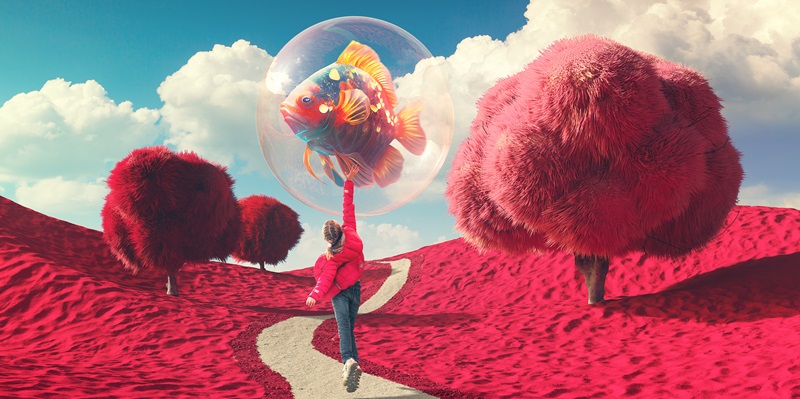In the case of “True Detective: Night Country,” the new season helmed by Mexican director Issa López, eagle-eyed viewers noticed a scene in the second episode featuring what appeared to be low-quality AI-generated posters on the wall of a character’s bedroom. This article delves into the implications of AI in entertainment, examining López’s use of AI, the response from fans, and the broader trend of artists incorporating AI-generated content into their work.
Description of the AI-Generated Posters
The posters in question depict a girl group and a rock band, respectively. Upon closer examination, it becomes evident that they are AI-generated and lack the intricacy of traditionally designed visuals. The inclusion of these posters sparks curiosity about López’s intentions behind their use and opens up a conversation about the role of AI in visual production.
Explanation from Showrunner Issa López
Seeking to address questions surrounding the use of AI in the production, López clarifies that her decision was not driven by cost-cutting measures or a desire to test cutting-edge visual production tools. Instead, she intentionally incorporated AI to make a statement or evoke a specific mood within the series. This deliberate choice adds a layer of complexity to the storytelling and prompts viewers to engage with the broader implications of technology in our lives.
López’s Resharing of AI-Generated Fan-Made Imagery
In addition to including AI-generated posters, López shared an AI-generated image created by a fan. This reshared image showcased a vehicle from the show’s fictional ‘TSALAL Arctic Research Station,’ with a slight modification. This move by López sparks further conversation, specifically around her willingness to embrace AI and blur the lines between professional and fan-generated content.
Notable Aspects of López’s Stance on AI
Although López’s intentions behind integrating AI into True Detective: Night Country are not explicitly stated, her use of AI, including reshared fan-made content, suggests she is not opposed to utilizing this technology to make artistic statements. This opens up intriguing possibilities as AI continues to impact the entertainment industry.
Exploring AI in Other Artistic Expressions
López is not alone in her experimentation with AI. Canadian visual artist Jon Rafman has also embraced AI in his work. Collaborating with rappers, Rafman recently released an audiovisual “trailer” for their album, utilizing AI to create a surreal and haunting experience. This collaboration highlights how AI-driven creativity can transcend mediums and facilitate innovative collaborations across the artistic spectrum.
Description of the AI-Generated “Vultures” Trailer
Rafman’s ‘Vultures’ trailer showcases a fusion of leather bondage and gimp imagery, burning structures, owls, wolves, clowns, and dark silhouettes. These elements twist, deform, and bleed into one another, presenting a surreal style reminiscent of other early AI video artists. The visual impact of the AI-generated content serves to captivate the audience and provoke thought.
Insights from Jon Rafman on AI in Art
In an interview with Dasha Nekrasova of the Red Scare podcast for Interview magazine, Rafman discusses how AI has revolutionized his artistic process. He shares that AI has transformed the way he approaches art, focusing on the final product rather than the traditional creation process. Similar to the Industrial Revolution, Rafman believes that AI has fundamentally changed the landscape of artistic expression.
Reception of the “Vultures” Trailer
Initial reactions from fans have been largely positive, emphasizing the unique and captivating nature of the “Vultures” trailer. The creative use of AI-generated content has enabled Rafman and the collaborating rappers to create an immersive audiovisual experience that engages viewers on multiple levels. The success of this trailer further highlights the potential of AI in cultivating audience engagement and amplifying artistic visions.
As demonstrated by López and Rafman’s projects, AI has found a place in the creative industry. The use of AI-generated content offers artists an avenue for experimentation, pushing boundaries, and creating thought-provoking experiences for audiences. While questions about the ethical implications and artistic integrity surrounding AI remain, it is undeniable that AI will continue to shape and transform the landscape of entertainment and art. As artists explore the potential of AI, we are undoubtedly witnessing the dawn of a new era in creative expression.

